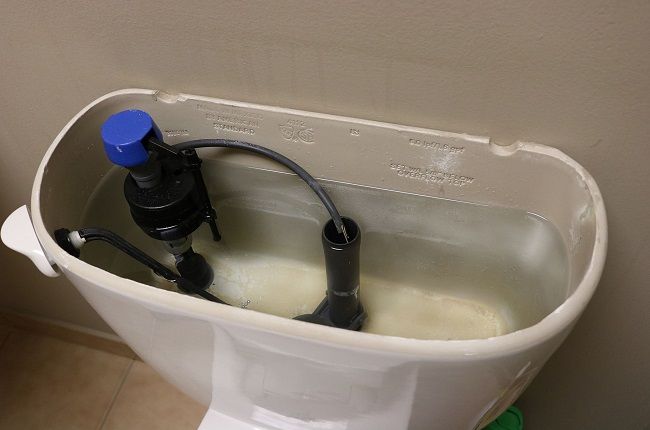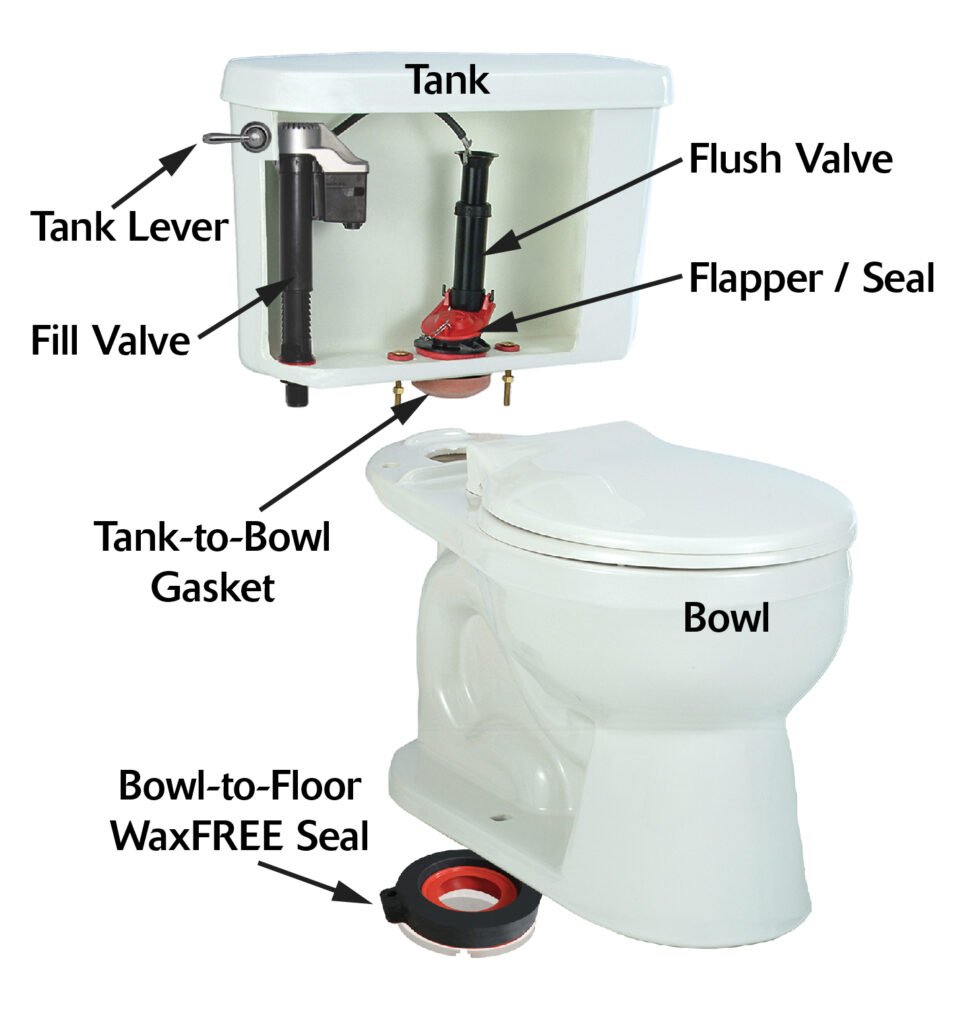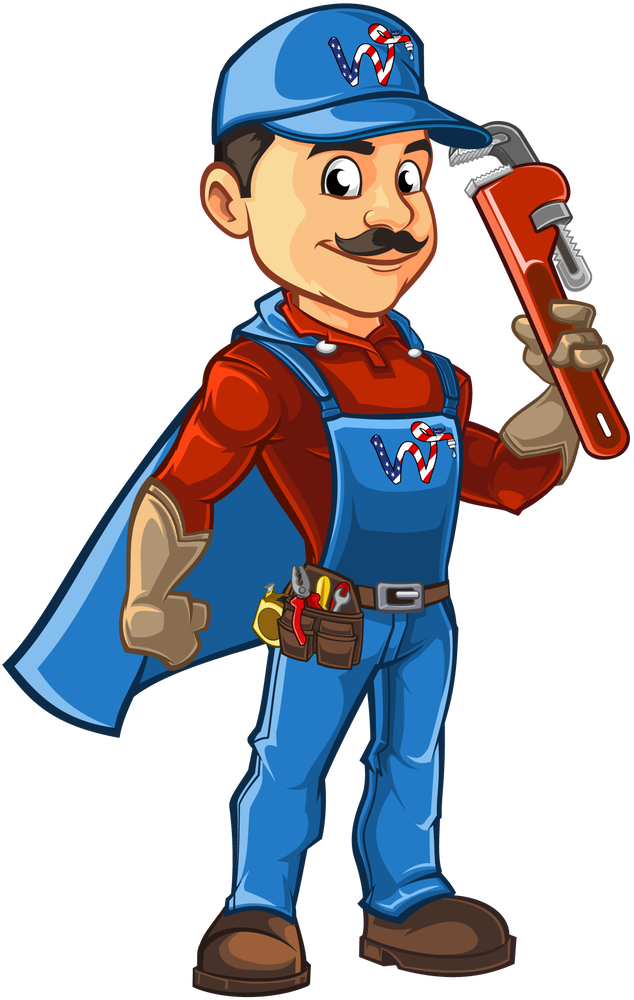
Have you ever flushed your toilet just to find that the does not fill up again? We know how inconvenient this can feel, as well as alarming if you do not know the root cause of the issue. There are many different reasons that could cause your toilet tank to stop from filling up. After all, your toilet has many different parts – when one part goes bad, it can cause a disruption to the entire toilet.
There are many common reasons why your toilet tank may not fill up after you flush it. We will detail some of those reasons, as well as provide suggestions that may fix the issue for you.
Common Issues for a Toilet Not Filling Up
The following are some of the most common instances that cause a toilet tank to not fill up:
Misadjusted Fill Valve
The most common reason for your toilet tank to stop filling up is a misadjusted fill valve.
Your toilet’s fill valve will regulate the flow of water from the tank by telling it when to continue filling and when to stop. When the fill valve is not adjusted properly, this can cause issues in how your toilet fills.
For example, the fill valve may have debris in the tube, or it may have visible cracks in it. Alternatively, it may not have been installed properly, further causing issues. Keep in mind, the fill valve connects directly to the water supply for the toilet.
Fixing a Misadjusted Fill Valve
The fill valve will be located on the left side of the tank. Many fill valves will either have a clip on the side or a screw on the top that actually designates how high the water should fill. Since there are two options, there are two ways that you can adjust your fill valve:
- If you have a fill valve with a clip on the side, pinch the clip and slide it up to let more water into the tank.
- If you have a fill valve with a screw on the top, turn the screw clockwise to allow more water into the tank. Moving it counterclockwise will result in letting less water into the tank.
Misadjusted Float Arm/Ball
The float is actually connected to the fill valve. It typically looks like a large, air-filled ball. The purpose of this mechanism is to assist the fill valve in determining how much water needs to be added into the tank. When you flush your toilet and the water goes out of the tank and into the bowl, this ball lowers down and pulls open the valve. This allows your tank to fill up with water again. As the tank fills and the ball rises with the water, it closes the valve accordingly.
When functioning properly, you can adjust your tank’s water level by adjusting the height of the float arm and ball on the fill valve. However, when this is misadjusted or broken, two things can happen: the water level will rise too high and overflow the tank, or, it will flow too little and it never fills.
Fixing a Misadjusted Float Arm/Ball
Issues with your float ball and arm is the other most common cause of a tank not filling up. If your float arm is not in a proper position, it is relatively easy to fix. You will need to bend the arm upwards. When you do this, you end up raising the float ball to a new level as well. If your float arm and ball system uses screws, you will need to loosen those to change the height. When the ball is moved up higher, it tells the tank to stop filling up later.
If you look at your float arm and ball and notice that it is broken, you will need to replace the piece. Luckily, if you are uneasy trying to change it yourself, our plumbers here at White’s Plumbing can certainly help.

Low Water Pressure
Are your water troubles extending beyond your toilet? Is the water pressure in your sink normal? If so, the issue may not just be something with your toilet tank. This would actually be an issue with your main water line. Low water pressure may be caused by a multitude of factors, such as a blockage or leak in the pipes, a failing water pump, or something else. Unfortunately, you most likely will not be able to fix this issue yourself.
Issue With Flapper
Your toilet’s flapper prevents your toilet’s tank from emptying without being flushed. If you find that your toilet is constantly running, this may be another sign that the issue is with the flapper. It is possible that the chain keeps getting caught beneath the flapper valve, which prevents the flapper from creating a seal. That chain can also become worn out or damaged. If the chain is too long, it will not be able to function properly.
Over time, your flapper can simply become worn out – this is something that happens naturally. When this happens, it will not be able to fill the tank correctly, because it does not have that sealing ability any longer.
Fixing your Flapper
If the flapper’s issue is with the chain, you can either replace the chain or shorten it so it does not get caught and can function properly. However, if the issue is with the flapper wearing out, you will need to replace that as well in order to create a seal. If you are uncomfortable with changing any of these pieces yourself, feel free to call White’s Plumbing to change them out for you. Our trained professionals will have the flapper fixed in no time!
Blocked Inlet Holes
One lesser-known cause of a toilet tank not filling up is blocked inlet holes. These small holes, located around the rim of the toilet bowl, allow water to flow into the tank. If they become clogged with mineral deposits or debris, it can restrict water from entering the tank efficiently, leading to a slow or incomplete fill.
What Causes Blocked Inlet Holes?
Over time, hard water can leave mineral deposits (mainly calcium and lime) inside your plumbing system, including the inlet holes in your toilet. These deposits can gradually build up and cause blockages, reducing the water flow and preventing the tank from filling properly. Additionally, debris from the pipes can sometimes get trapped in these holes, worsening the issue.
How to Diagnose Blocked Inlet Holes
If your toilet is taking much longer to fill than usual, or the water level seems unusually low, blocked inlet holes may be the problem. You can check for this by carefully inspecting the holes around the rim of the toilet bowl. If you notice that water is only trickling out of some of the holes instead of flowing evenly, they may be blocked.
Fixing Blocked Inlet Holes
Clearing blocked inlet holes is relatively simple. You can use a small brush or a piece of wire to gently clean out the holes and remove any mineral buildup or debris. Alternatively, a descaling cleaner specifically designed for hard water deposits can help dissolve the blockages. To prevent future issues, consider installing a water softener if your home has hard water, as this will help reduce mineral buildup in your pipes and fixtures over time.
Faulty Float Valve
A faulty float valve is another reason your toilet tank might not be filling up properly. The float valve controls the amount of water that enters the tank by signaling when it’s time to stop or start the water flow. If it malfunctions, the tank may either not fill at all or may not fill to the appropriate level.
How Does the Float Valve Work?
The float valve is connected to a float (often a ball or a cup) that rises as the tank fills with water. Once the water reaches the correct level, the float valve signals the water to stop. If the float valve is broken or damaged, it may fail to open, preventing water from filling the tank.
Identifying a Faulty Float Valve
If your toilet tank isn’t filling up at all or is only filling partially, the float valve could be the culprit. Additionally, if the water in your tank continues to rise beyond the set water level or doesn’t fill up to the right level, it’s likely that the float valve isn’t working as it should.
Fixing a Faulty Float Valve
To fix this issue, you may need to adjust or replace the float valve. Start by checking the position of the float—if it’s too high or too low, adjust it using the screws or clips attached to the valve. If that doesn’t work, the valve itself may need to be replaced. You can find replacement float valves at most hardware stores. If you’re unsure how to install a new float valve, it’s a good idea to call a plumber to handle the job.
Leaking Fill Tube
Another possible reason for your toilet tank not filling up is a leaking fill tube. The fill tube is responsible for transferring water from the fill valve into the overflow tube, which refills the toilet after a flush. If this tube is damaged or disconnected, it can prevent the tank from filling completely.
What Causes a Leaking Fill Tube?
Over time, the fill tube can wear out, develop cracks, or become dislodged from its proper position. If the fill tube is leaking or not properly aligned, it will either cause water to leak out before it can fill the tank or stop the water from reaching the tank altogether. Sometimes, the tube may also become blocked by debris, further hindering the flow of water.
How to Spot a Problem with the Fill Tube
If you flush your toilet and notice that the water level in the tank remains low or there is water pooling around the base of the toilet, a leaking fill tube could be to blame. You can check the fill tube’s connection to the fill valve and the overflow tube to see if it’s securely in place and free from visible damage.
Fixing a Leaking Fill Tube
To fix a leaking or malfunctioning fill tube, first inspect the tube for any cracks or misalignments. If the tube is simply loose, you can reattach it to the proper position. However, if the tube is cracked or damaged, you’ll need to replace it with a new one. Fill tubes are inexpensive and easy to find at most hardware stores. If you’re not comfortable replacing the tube yourself, a plumber can easily handle the repair.
Contact White’s Plumbing Today
If you cannot solve the issue with your toilet using the tips we mentioned, your toilet may have a different issue. White’s Plumbing near Youngsville, North Carolina is happy to help anyone near the Wake or Franklin County areas solve their plumbing woes. Our trained technicians are available to not only diagnose the issue at hand, but can get your toilet up and running again in no time. Feel free to fill out the contact form on the right of this page or give us a call at your earliest convenience so we can help you fix your toilet that is not filling up.




